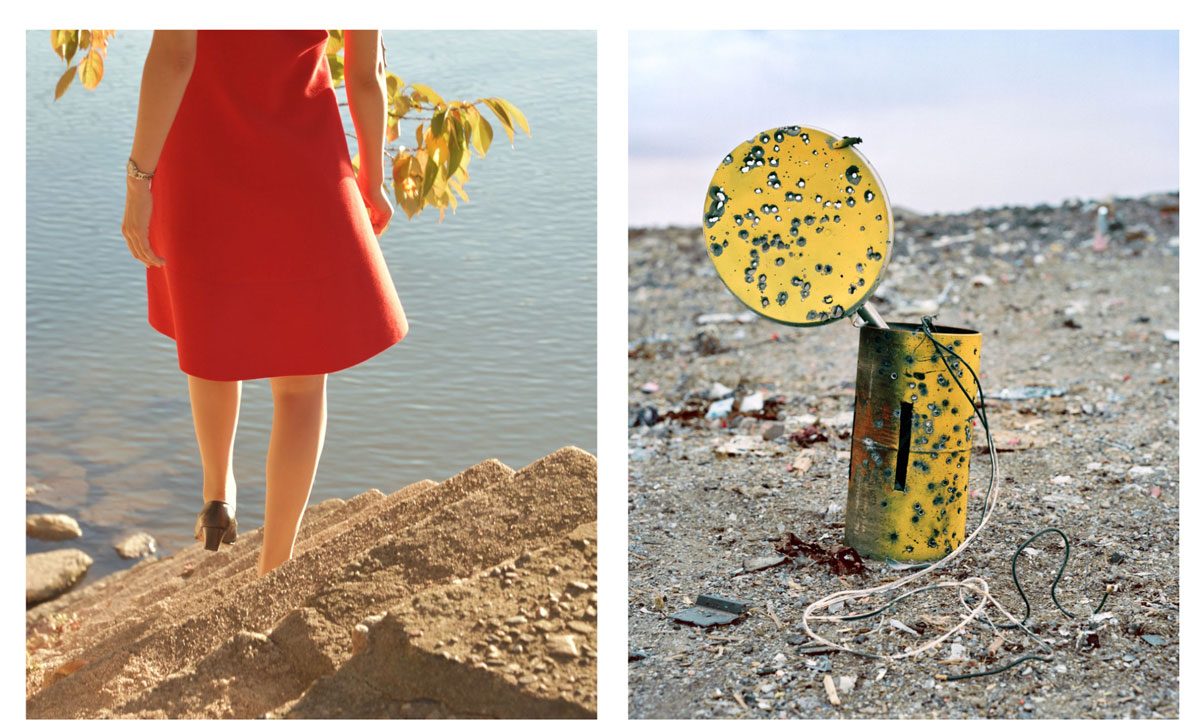
(Left): Aya Fujioka, Here Goes River (112), 2017, edition 3 of 8, chromogenic print, 25.8 x 39 in (65.5 x 99 cm); 29 x 42.5 in (73.7 x 108 cm) framed; (Right): Alexa Hoyer, Dish on Tube, 2017, edition of 10, 2 AP, archival pigment print, 30 x 24 in (76.2 x 61 cm)
Artist Focus: Aya Fujioka and Alexa Hoyer
On view in Project Space
525 West 26th Street, NYC
Seizan Gallery is pleased to present the works of two visionary female photographers, Aya Fujioka and Alexa Hoyer. Signature series by both artists are currently on view in the gallery’s project space, offering distinct yet complementary perspectives on place, memory, and overlooked narratives.
Aya Fujioka is a quiet master of capturing the everyday. Her work bypasses the pursuit of a single “decisive moment,” instead embracing a succession of peripheral, intimate scenes. These seemingly mundane images form subtle narratives, either revealing a relationship between artist and subject or liberating the subject from traditional storytelling. Fujioka’s approach is deeply rooted in Japan’s “Shashinshu” tradition—a form of photobook regarded not as a supplement to an exhibition but as an art object in its own right. In contrast to Western photobooks, often treated as catalogs or archival records, the Japanese Shashinshu is a storytelling medium where meaning is built through a sequence of images. Fujioka has published several of these with AKAAKA, a leading Japanese art publisher specializing in this genre.
Alexa Hoyer is a visual artist and curator whose photographic projects explore overlooked or ephemeral aspects of both urban and rural environments, capturing unexpected narratives found in public and often unconventional spaces. Based in New York City, Hoyer has explored a wide range of subjects—from handmade window displays in Havana (Montaje al Aire), to boarded-up storefronts during Manhattan’s COVID-19 lockdown (Window Dressing), to the curious emptiness of Queens’ tree beds (Fallow Frames). These projects often involve local communities and highlight the interplay between improvisation, identity, and environment.
To learn more, click here.
